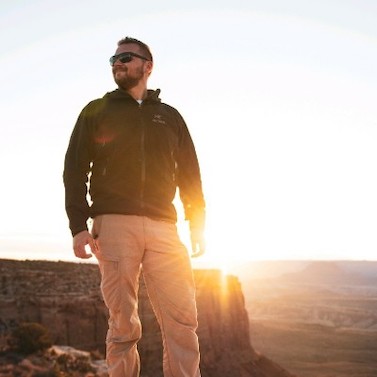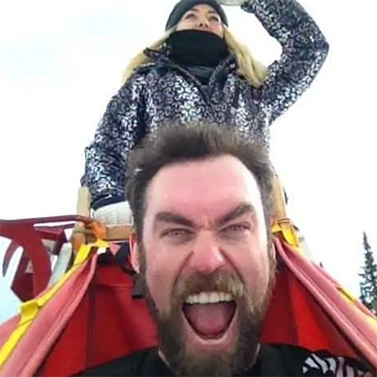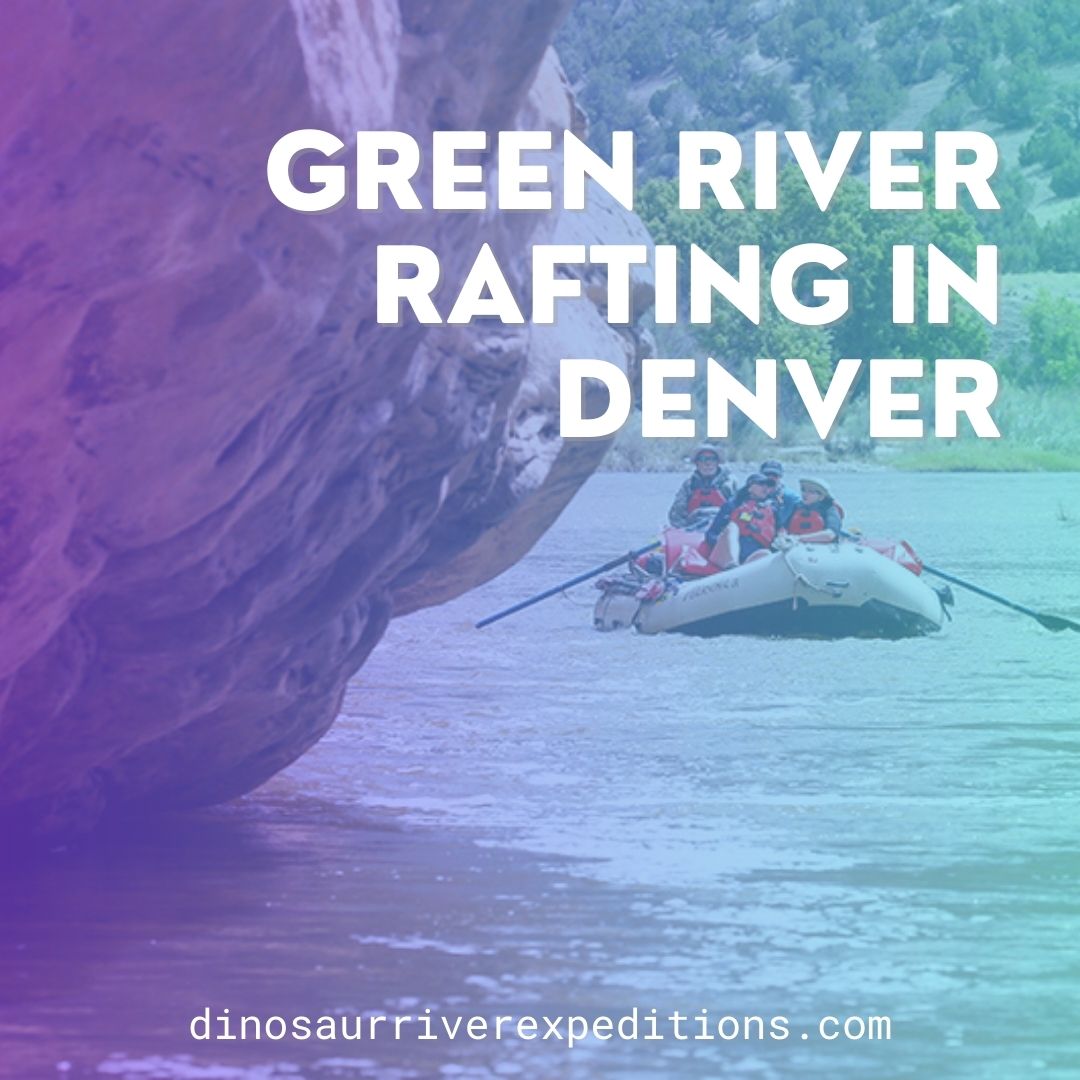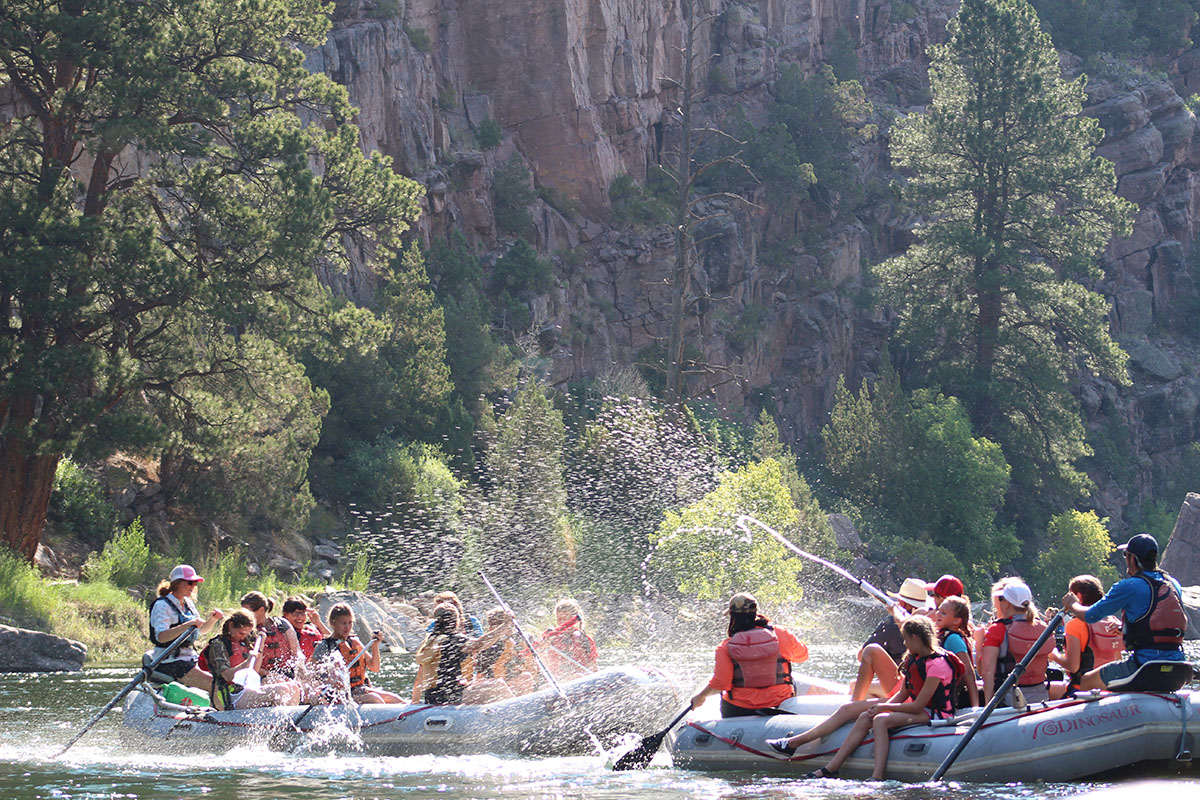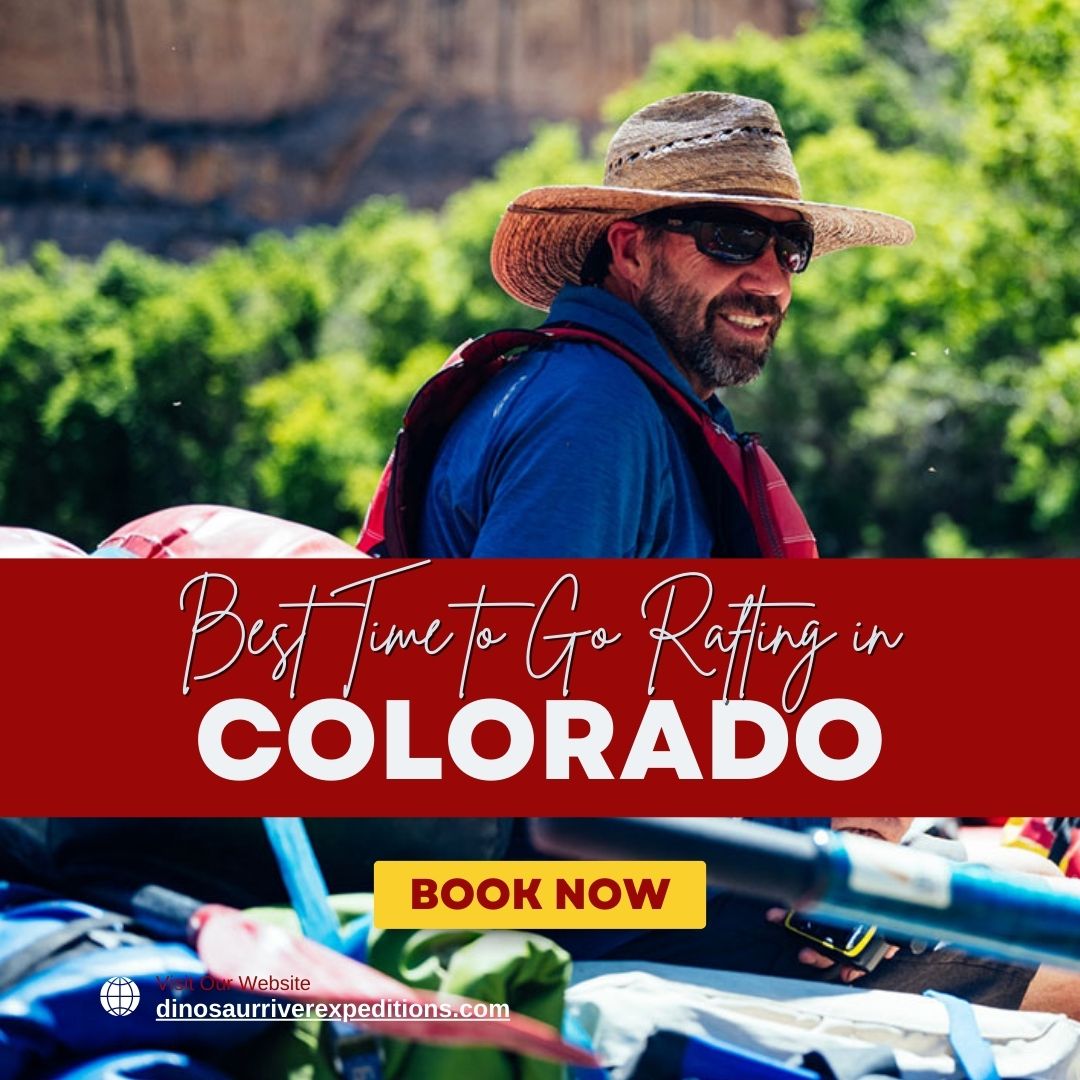For decades, we have heard that tourism and nature are bitter enemies, with humans as the usual culprit leaving trails of trash and other debris in their wake everywhere they go. Today, however, tourism has evolved and people are experiencing nature in a way that engenders love, respect, and a desire to protect these treasured outdoor spaces. At Dino River Expeditions, we see people every day who are forever changed after rafting along the Green and Yampa Rivers as they twist and turn through some of the most picturesque canyons on earth. In this article, outdoor enthusiasts and conservationists alike came together to offer some key ways in which tourism and conservation now work together for the enjoyment of all.
Eliott Kroll
Eliott Kroll, Co-Owner & Marketing Manager of National Park Guided Tours.
Outdoor recreation and visitation
Outdoor recreation and visitation are the two most powerful tools in the conservationist’s PR kit.
As we saw with climate change, a PR campaign can only take you so far. Scientists, movies, documentaries, television, and social media did manage to make a dent. But physically experiencing the damage by seeing it in person is an entirely different story.
Growing up in Indiana and Illinois, my childhood was largely outdoor-based, but there were never any enormous expanses of preserved land to enjoy and explore like there are in western states. Midwest economies are driven by a lot of agriculture, and children have a very small sphere of perspective about the great big world out there. A child that sees no realistic opportunity to ever experience the more magical and wild places of the world might care less about recycling, proper trash disposal, water table pollution, or biodiversity. The wheels underpinning civilization often mask the real cost of things through economies of scale. You throw your trash into a bin. Maybe you throw your trash out the window. Who cares? It goes somewhere over there, someone else will pick it up, and it disappears into the ether. It costs nothing, and it’s not really your problem.
In 2011, I spent some time at the Marine Corps Mountain Warfare Training Center in Bridgeport, California. There were some stringent regulations there about environmental protection that make you roll your eyes when you’re performing military duties. But when the time came that someone spilled diesel on the ground and we had to dig out the ground to make sure the contamination didn’t spread, nobody had any problem with this manual labor. These midwestern young men had never experienced total immersion in such a spectacularly beautiful and untouched place. We all cared for it in a much deeper way by experiencing it than anyone giving us an environmental lecture could hope to do.
The unfathomable size of the sequoias, the fresh pine smell of the little ground plants that filled the air, and the brilliant smog-free sunrise and sunset were enchanting. I fell deeply in love with nature during my time there, and I have never forgotten it.
When I was around 16, I worked at Best Buy. One of the sales tactics we were taught was to put the product in the customer’s hands. This works because people begin to take mental ownership of the product while they’re holding it. They want it. They’re enjoying the fantasy of owning it. Tourism works in the same way.
While not everyone can get up and move to more secluded or wild areas to enjoy them year-round, an enormous number of people weekend and vacation in and around our National and State Parks, Forests, and Wilderness areas. In the past 10 years, 51% of Americans have declared that they annually enjoy outdoor recreation of some kind. I would guess that number has grown higher in recent years as the internet has pulled us all closer together 24/7 and made the “wanderlust” lifestyle more appealing through social media.
In this space, the outdoors represent freedom: freedom from bills, emails, phone calls, text messages, work schedules, the boss, car exhaust, sirens, and the constant stream of negativity and noise coming from politics, television, and social media. For a nation that claims freedom as a foundational principle, the areas in which it may be experienced are dwindling. People are becoming more aware of this.
Astronauts have said that viewing the Earth from above has given many of them a new perspective about the world. When people visit tourist sites and see how small and fragile even our most enormous and majestic places are, many of them are changed. Outdoor conservation is one thing that both the right and the left actually agree on. Hunters and anglers generate more revenue for outdoor conservation than the Sierra Club. People that enjoy and use the outdoors understand how limited it is becoming as cities spread and trash shows up on the banks of protected rivers. The spread of civilization is beginning to threaten their favorite hobbies and pastimes.
We don’t need less visitation or recreation in the world’s wild places, we simply need better management, enforcement, and more protected areas. The American Outdoors Act is fixing a lot of upkeep issues with our outdoor management institutions and facilities, but this is more a war of hearts and minds than money.
Outdoor recreational opportunities can be limited for people that have little disposable income or little experience in the joy of it. Our wildlands bring out the best in us. There’s drama, romance, liberty, solitude, purity, chaos, and natural order. It’s sacrificing the ease and comfort of civilization in the great pursuit of adventure. The wild is the only place left where you can discover something that has never been seen before. Increasing access through recreational opportunities will win hearts and minds once people experience feeling small again. It shouldn’t be limited to an easy drive on a paved road. Like a runner’s high, the reward is in the sacrifice.
It may take sweat and solid footwear to get to a glorious waterfall, but everyone that has been there knowing why it is better than looking at a photo online.
I recently started a personal program in the past couple of years that I plan to take mainstream. While living in the Phoenix area, I would often visit the wild horse bands of the Salt River. The grace, majesty, and beauty of these animals are hard to beat for a 20-minute drive from home. Unfortunately, boaters, tubers, and campers have absolutely wrecked the shoreline with trash. No matter how many volunteer cleanups were organized, the manpower available to combat the litter is simply overwhelmed.
It occurred to me that like many things, we may be able to spontaneously crowdsource this issue instead of attempting to create Facebook groups for activists to whine about how other people aren’t doing enough. If we boil the old, “leave it better than you found it,” adage to its core, we find that the minimum effort necessary to leave a place better than you found it is to simply pick up one piece of the trash whenever you visit somewhere. This, “Just One Piece,” initiative has been my personal mission for a few years. Now that I live at the gates of Rocky Mountain National Park, I find myself often coming back from the park with a cigarette butt or a cargo pocket full of pieces of foil and plastic wrappers.
The impact I’m making may be small on its own, but if we could convince the other 51% of Americans that enjoy outdoor recreation at least once per year, we could be picking up nearly 200 million pieces of trash every year while expending no money or effort beyond bending over one time per trip and putting one piece of trash in our pockets. It’s a simple solution to a complex problem. But if we can win the hearts and minds of the public to put in so little effort that it is forgettable, we can make a world of difference.
Erin Clarkson
Erin Clarkson authored the Savannah First-Timer’s Guide and enjoys helping visitors plan the perfect trip to Savannah. An avid photographer, she frequently posts photos of the Historic District both on her website and within her private Facebook group.
Preserve and protect the trees
Wormsloe Historic Site is one of the most popular tourist attractions in Savannah. Its mile-long tree-lined drive, aka the “avenue of oaks,” has graced the cover of numerous books and magazines about the South. Visitors come from all over to visit the state park, which features tabby ruins of the oldest standing structure of Savannah and includes an on-site museum.
Unfortunately, the steady stream of tourists hasn’t been healthy for the beautiful Southern live oaks lining the dirt road. Tourists frequently pull to the side of the road to take selfies, which damages the root system of the trees. And since the road isn’t paved, the dirt the vehicles kick up ends up settling on the leaves of the trees, which interferes with photosynthesis.
Since the beautiful trees of the Lowcountry are a source of pride and joy to many Southerners, state representatives have recently taken action to preserve and protect the trees for future generations. They’re in the process of building a new off-site parking lot and hope to have it completed in the fall of this year.
Visitors will be able to park in the new lot and take a trolley to the museum, thereby reducing the number of vehicles traveling on the dirt road each day. In addition to helping preserve the trees, visitors will be able to capture better photos of the tree-lined drive since there won’t be any cars interfering in their shots! It’s a win/win.
Jonas Skutka
Jonas Skutka is a nature enthusiast and an environmental communication specialist. He is a co-founder of Alerce Environmental Communication Agency.
Restoring rather than protecting
In detail, it is not as straightforward and of course, it depends on the ways nature conservation happens.
Nature conservation in its traditional forms is not entirely open to tourism. This type of nature conservation aimed to restrict human access and protect nature mainly from human interactions. That, by default, is not very compatible with tourism.
But there are new fresh approaches to nature conservation such as rewilding that actually encourage interactions with humans. Thus, it allows for or even invites, tourism initiatives. It calls for restoring rather than protecting, which conserves nature in its functional forms and without conservationists having to interfere too much.
A great example is the Rhodope mountains in Bulgaria. Nature conservation efforts realized that in order for nature to be conserved and restored to its functional forms, large grazers need to be introduced to fill in the gap of healthy nutrient cycles of the landscape.
This costs a lot of money and the local rural communities that suffer from urbanization – young people leaving to cities – could not afford to support it. In fact, they didn’t even understand the reasoning.
But tourism initiatives really help to make the local communities reconnect as well as finance the investments in bison reintroduction. Bison roaming the Rhodope mountains then contribute to a healthy nutrient cycle to soils, help graze areas that would otherwise change because of overgrowing vegetation.
But most importantly, it attracts tourism to the region bringing more money and thus fuel for restoring human-nature relationships as well as help to nurture local communities.
Tourism in the Rhodopoe mountains, therefore, creates a win-win-win situation. It supports the nature conservation efforts, connects local communities with nature, and creates unique experiences for the tourists.
Dumay de Longchamps Boullé
Dumay de Longchamps Boullé, 12-year safari guide, wildlife photographer, and Tour Director at Tauck Tour.
Tourism support wildlife and ecological management
Being involved in the tourism industry in Africa, and heavily involved in the conservation efforts within private and national parks, it’s hard not to see the positive impact that tourism has on conservation. Of course, some park wardens or rangers on the front lines may not see the big-picture impact and even dislike having tourists in the parks. However, the vast majority of ecotourism professionals and wildlife researchers recognize the impact on conservation.
Tourism brings in the bulk of the revenue that private parks and national parks generate. These funds in turn are used to support wildlife and ecological management, research program funding, and tactical anti-poaching ground units protecting the wildlife physically on the ground.
Also, tourism dollars are used to expand publicly and privately-owned wildlife areas. Larger animal territory creates more space for increasing populations. This broadens the gene pool and leads to more viable populations long-term.
On the socio-economic side, eco-tourism creates a huge amount of employment that supports local economies. When its livelihood is tied to the presence of the animals, the local community is incentivized to support their protection. Constructive employment directly reduces poaching, as families are less likely to resort to “bush meat” for sustenance and illegal animal trade for income. Programs that train and employ anti-poaching teams also create honorable employment for men and women. These anti-poaching teams risk their lives protecting the incredible wildlife that millions of people from all over the world come to see each year.
Give individuals opportunities to experience beauty, and adventure
As humans, we form bonds with the place when we have meaningful experiences there. Some families want to go back to a particular oceanfront or mountain retreat again and again, notably because they have come to associate that place with positive family time, fun activities, personal growth experiences, special relationships, and times of awe and beauty. When we as travel professionals or outdoor guides provide meaningful experiences in outdoor places, our guests learn, almost without thinking, to value and treasure those places. It is not a large step then to educate them about how to care for those places. Taking our trash with us when we hike, not damaging trees by carving our initials in them, not pasting big boulders with ugly spray-painted graffiti – these are not merely the rules of outdoor behavior. These are the expressions of a heart that loves a place. So rather than teaching the rules about caring for the outdoors first, let’s give individuals opportunities to experience joy, companionship, beauty, and adventure in these marvelous places. Then, with a little guidance and education, the practices and behaviors of conservation and environmental care will flow naturally. People will work and fight to protect what they love and value, and that is often true of people in wild and natural places.
As an adventure guide, I take a lot of young people into the outdoors. And I find that if I, for example, simply include a trash pickup after the hike, and give children a hands-on opportunity to beautify a place, they become fiercely protective of that place, and almost indignant when they see someone littering or defacing the area. Psychologists say that we often think our way into a way of behaving, but I would observe that we can also behave our way into a way of thinking. When we involve people in these behaviors, we are helping to shape their values, and hopefully, raising a generation that will forever value and protect wild places.
Brian Conghalie
Brian Conghalie, Founder of myopencountry.com. He is an avid hiker, backpacker and enjoys everything related to outdoor adventures.
Encourage organized activities
Nature is under threat everywhere, especially near population centers, and where large numbers of visitors go. And the best way to mitigate this threat is to encourage organized activities and to manage the whole thing.
Outdoor pursuits centers, national or state-run parks; installing facilities such as visitor centers, cafes, restaurants, guided tours, marking out set trails; charging an entry fee or for parking. The revenue from such methods not only provides employment but also gives value to nature itself. Visitors will be shown – even if only subliminally – that nature can be viewed and enjoyed in an appropriate, sustainable manner, and it’s to everyone’s advantage to maintain that. Also of course a large part of the revenue generated is plowed back into the conservation of that locality.
The obvious BIG example is Yosemite National Park. Visitors there spend hundreds of millions of dollars a year – much of it used to conserve and protect the park. Nationwide the figure is tens of BILLIONS spent by tourists and visitors to National Parks.
Tourism can have a hugely beneficial impact on nature – but it has to be managed responsibly, not a free-for-all.
Going outdoors is a lot of fun. There’s a lot of adventure to unfold because there are so many things that we can do outdoors. There’s a lot of benefits to going outdoors, and part of that is helping in the conservation of nature.
Here are ways outdoor activities and tourist spots can help in the conservation of nature:
Increases support for conservation
Tourism and outdoor activities can help in giving more support for conservation. When we go to tourist spots and do outdoor activities, we become more curious and want to learn about the world around us. Being more curious about outdoor activities can spark some community movement for nature conversation.
Finances conservation
Tourist spots that people go to usually have fees. But they aren’t only for the maintenance of the place. They help in financing the conservation of nature. We wouldn’t be able to conserve nature more effectively if there were no funds. So, by visiting tourist spots, we’re already doing our part in the conservation of nature.
Spreads awareness
When we do outdoor activities like hiking or camping, we know more about the places we traverse. We realize that every mountain has a story. Every place we set up our tent is important. We become more aware of what we have to do for nature.
There are a lot of benefits to outdoor activities and tourist spots. As they say, it is the great outdoors. Learn to explore and you never know how much help you can give.
This is a crowdsourced article. Contributors are not necessarily affiliated with this website and their statements do not necessarily reflect the opinion of this website, other people, businesses, or other contributors.
